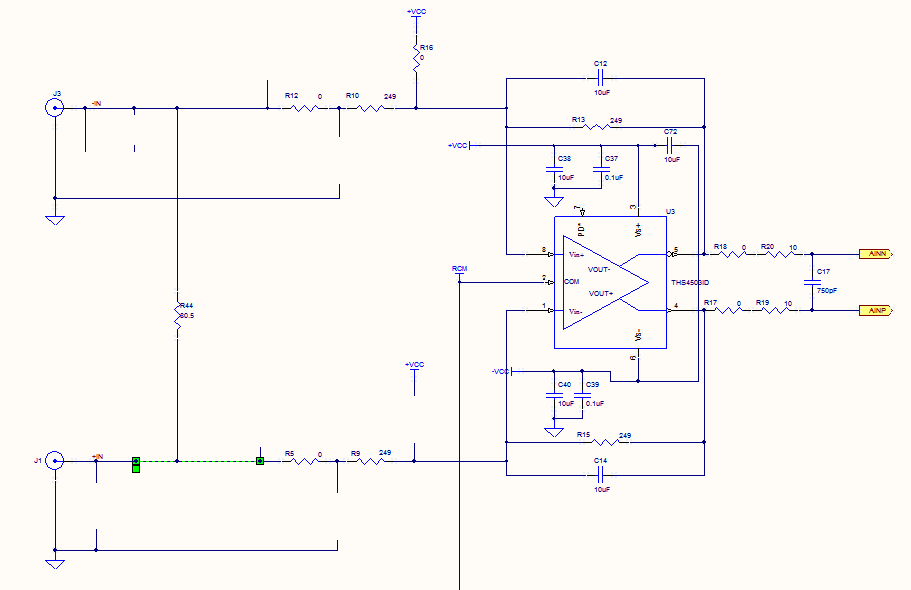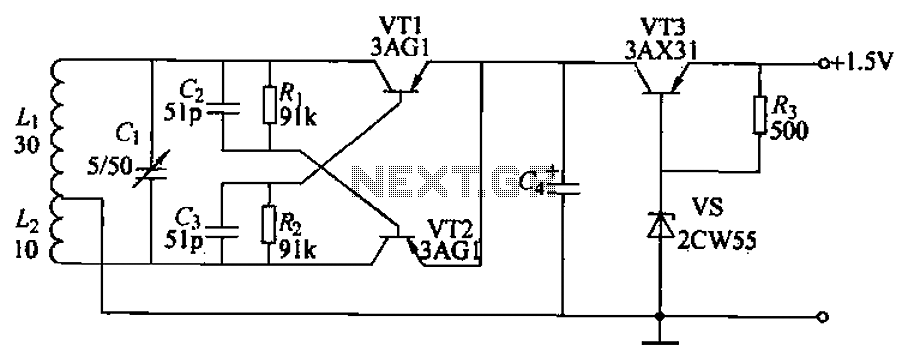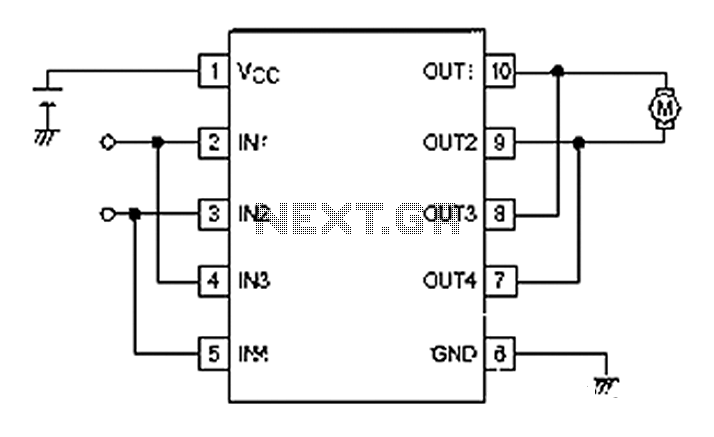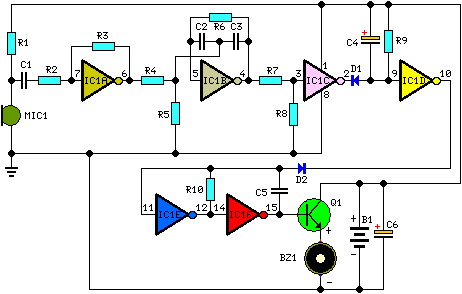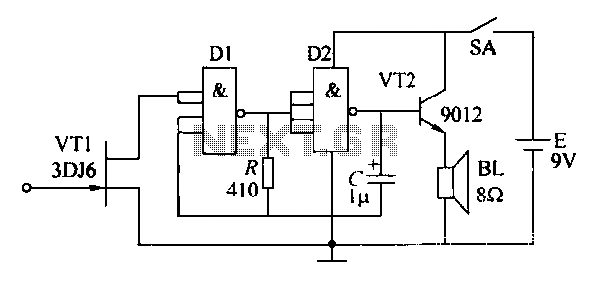
Many Logic probe circuit ideas
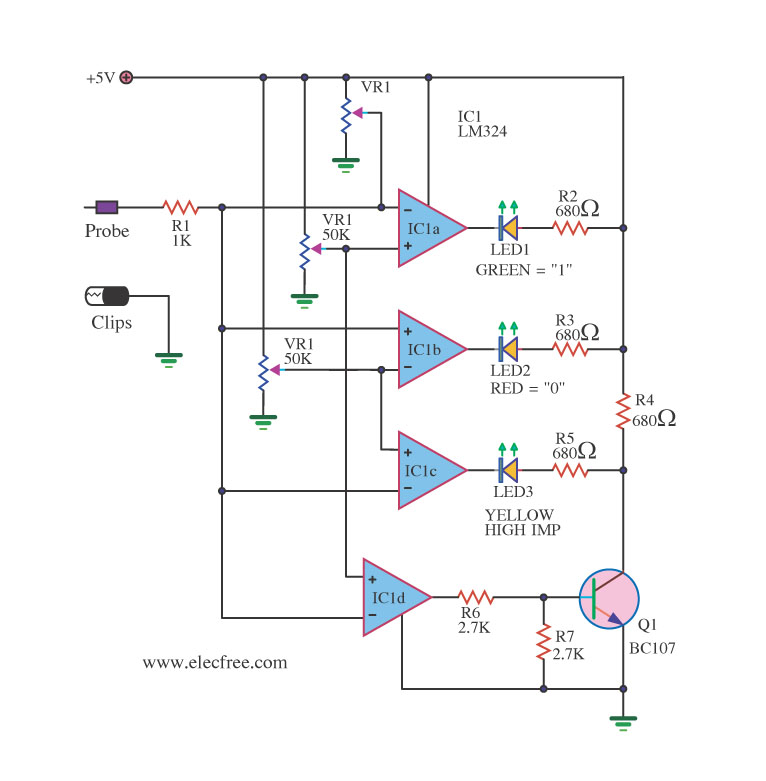
A logic probe is a useful tool for checking digital circuits. It functions similarly to a meter, which is employed to measure power in electrical circuits.
A logic probe is an essential diagnostic instrument in digital electronics, designed to analyze and test the logic levels in digital circuits. It is capable of indicating the presence of high (logic 1) and low (logic 0) signals, as well as providing insights into the state of the circuit under test. Typically, a logic probe consists of a probe tip for direct contact with circuit points, a display (often LED indicators), and a power supply, which may be derived from the circuit being tested or an external source.
The logic probe operates by applying a voltage to the circuit and detecting the resulting logic level. When the probe tip contacts a point in the circuit, it measures the voltage level present. If the voltage exceeds a certain threshold, the probe indicates a logic high; if it falls below that threshold, a logic low is indicated. Some advanced logic probes may also provide additional features, such as pulse width measurement, frequency counting, or the ability to decode specific logic families.
In practical applications, logic probes are invaluable for troubleshooting digital circuits, allowing engineers to quickly determine whether a circuit is functioning correctly or if there are faults present. They are particularly useful for testing integrated circuits, microcontrollers, and digital logic gates, enabling rapid identification of issues without the need for more complex testing equipment. The portability and ease of use of logic probes make them a staple in both educational settings and professional electronics laboratories.Logic probe is useful tool to measure, in a check digital circuits. As a meter, which is used to measure power in electrical circuits. Logic probe was used for.. 🔗 External reference
A logic probe is an essential diagnostic instrument in digital electronics, designed to analyze and test the logic levels in digital circuits. It is capable of indicating the presence of high (logic 1) and low (logic 0) signals, as well as providing insights into the state of the circuit under test. Typically, a logic probe consists of a probe tip for direct contact with circuit points, a display (often LED indicators), and a power supply, which may be derived from the circuit being tested or an external source.
The logic probe operates by applying a voltage to the circuit and detecting the resulting logic level. When the probe tip contacts a point in the circuit, it measures the voltage level present. If the voltage exceeds a certain threshold, the probe indicates a logic high; if it falls below that threshold, a logic low is indicated. Some advanced logic probes may also provide additional features, such as pulse width measurement, frequency counting, or the ability to decode specific logic families.
In practical applications, logic probes are invaluable for troubleshooting digital circuits, allowing engineers to quickly determine whether a circuit is functioning correctly or if there are faults present. They are particularly useful for testing integrated circuits, microcontrollers, and digital logic gates, enabling rapid identification of issues without the need for more complex testing equipment. The portability and ease of use of logic probes make them a staple in both educational settings and professional electronics laboratories.Logic probe is useful tool to measure, in a check digital circuits. As a meter, which is used to measure power in electrical circuits. Logic probe was used for.. 🔗 External reference
